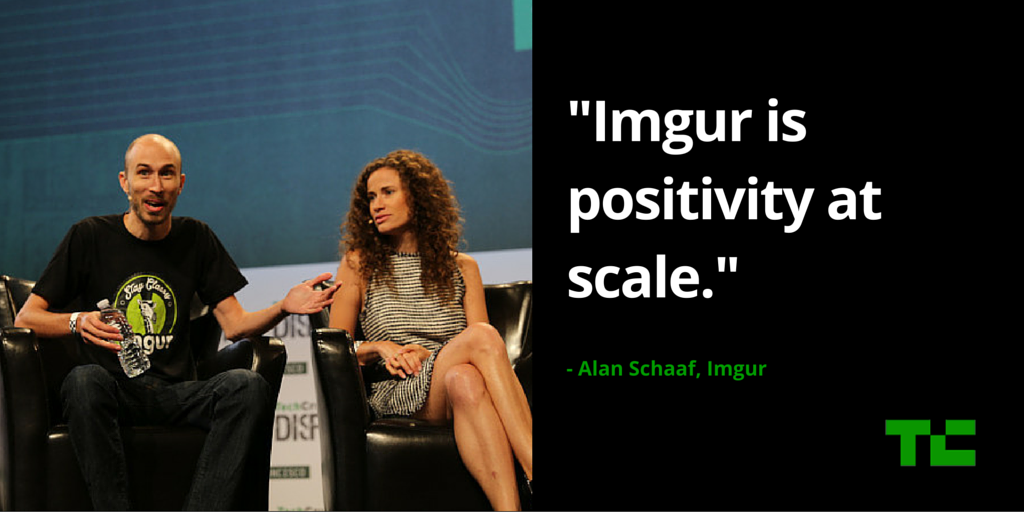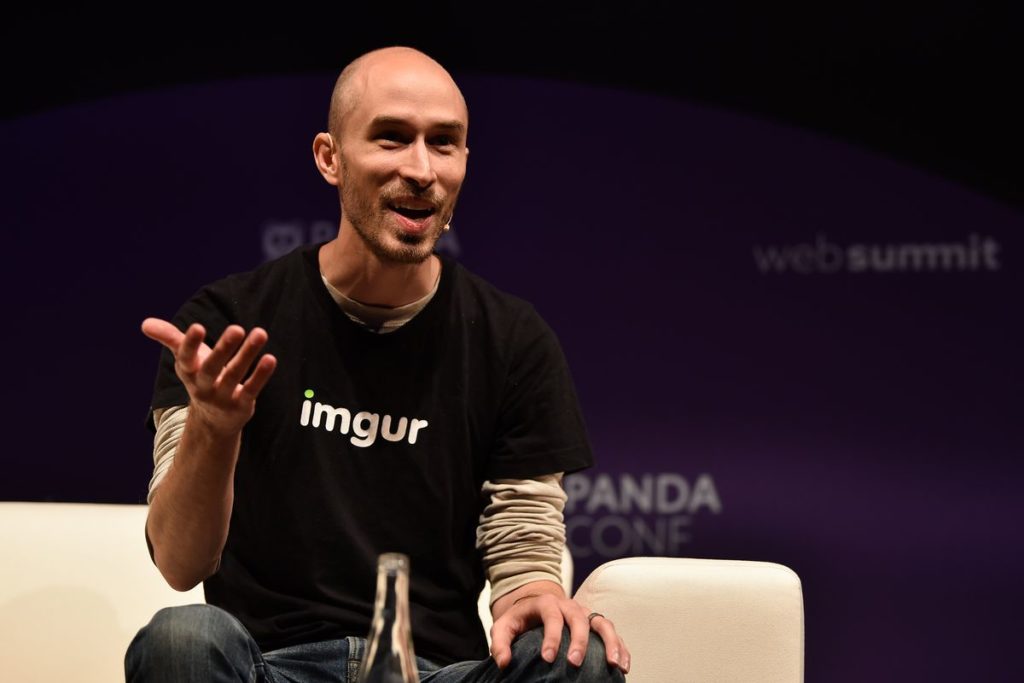Alan Schaaf, founder and CEO of popular visual media sharing site Imgur, didn't expect that studying computer science would be so easy.
Turns out that’s what happens when you’re a self-taught, self-proclaimed “computer guy.”
It wasn’t a fluke that Schaaf, at one point named to Forbes’ prestigious 30 Under 30 list, was able to build a $10 million net worth out of nothing.
Schaaf’s relationship with computers began at a young age when he was only in fifth grade. That may seem normal for today's kids, but for 31-year-old Schaaf, his early engagement and passion for computers and software was a sign of things to come.
“I just absolutely loved, fell into it, learned everything I could about it, immediately became the computer guy in my family and all my friends,” Schaaf admits in a conversation Kara Swisher on her podcast Recode Decode.
Twenty years later, Imgur is one of the top-20 most visited websites in the U.S. according to Alexa. It ranks ahead of more household name sites like Craigslist, Hulu, and even Apple’s website.
For those unfamiliar, Imgur is a social image, meme, and gif sharing site. It aims to provide a place where people can “disconnect,” if you will, and enjoy funny, relatable, and digestible content. While you can share and engage with posts on Imgur, the focus of it shies away from community building, unlike other major social media platforms.
As Schaaf likes to put it, Imgur is a “community-powered entertainment destination.”

So how did Schaaf pull it off?
Early Development
Mark Zuckerberg, Larry Page, Evan Spiegel, and Jack Dorsey’s stories of success in the Silicon Valley age of U.S. Capitalism are well known.
Schaaf’s story of growing Imgur into a platform with a reach of over 250 million people a month remains one of the most underrated ones among young entrepreneurs.
Schaaf’s early work looked poised to unfold along the narrative lines of a college entrepreneur dropout story.
Because of Schaaf’s passion for computers and software from a young age (he even had his own computer help and repairs business in high school), he arrived at Ohio University as a computer science major a little over-prepared.
Needless to say, there wasn’t much keeping him engaged from an academic and learning standpoint.
“I absolutely thought about [dropping out]. But the thing is, my mom, single mother trying very hard to put me through college, I really wanted to finish.” Schaaf said.
“Ever since I can remember, my mom has been self-employed. She used that term, but she was actually an entrepreneur. She wanted to do it herself, she didn’t want to hire employees, wanted to support herself and her family by what she loved doing. That was inspiring.” Schaaf said in an interview with Entrepreneur.
Of course, as a passionate, self-driven individual, Schaaf had to find something to challenge himself with.
Where Imgur Comes In
“In order to learn, I kept on doing personal projects. One of those personal projects that I launched was Imgur, and that’s how it started.”
Schaaf’s software projects tended to develop from a personal need or problem. At the time in 2009, Schaaf found it too difficult to quickly and easily share images with his friends.
Some of the largest photo platforms at the time, like Flickr and Picasa (since retired by Google), functioned only as high-quality photo galleries and storage. Schaaf, though, saw a distinction between photos and images.
“I thought that images and not photos, that images required different functionality than the Flickrs and the Picasas of the world,” Schaff said.
“Those products were always based around high-quality photos. Photos are memories. You go to a wedding and you take a thousand pictures and you want to capture these moments and then they kind of sit there and you want to have them on hand for archival purposes. I didn’t want that at all. I wanted to quickly share a meme or gif or a logo or something with my friend.”
For the $7 cost of the domain name and Schaaf’s personal time, Imgur was born.
From that point, it quickly became clear that Schaaf’s desire for faster, more accessible image hosting and sharing was not his alone.
Schaaf was an active Reddit user and shared Imgur on a thread as a gift to the community. It immediately took off. In the first five months, the software that Schaaf designed in his dorm room had accumulated a million total page views.

From Dorm Room to Boardroom
Imgur quickly became the default hosting and sharing site for Redditors and was highly adopted on Facebook and Twitter.
The positive impact and response turned Imgur into a passion for Schaaf, one that he decided to pursue after graduating. Schaaf continued to run Imgur in Ohio before moving the business to Silicon Valley.
During that time, Schaaf bootstrapped the business himself and brought it to profitability from advertising. It was then that Schaaf ran into a problem that every entrepreneur would love to have: too much demand and growth potential, not enough money.
“I just wanted to grow a really big business. I thought in order to do that ... Well, then I thought in order to do that we needed more money.” Schaaf said.
In addition to meeting their growth demand at the time, Imgur faced a quickly changing world spending more and more time on mobile devices.
“Really, when you think about it, Imgur is absolutely perfect on your phone because it’s just entertainment. It’s quick, bite-sized moments, this instant gratification that you get through images.” Schaaf said.
“It works really well on your phone, but we didn’t have an app. We had, I think, 12 people at the time.”
He, of course, was right.
In 2014, Schaaf worked with venture capital firm Andreessen Horowitz to raise its only funding to date to the tune of $40 million. The infuse of capital gave Schaaf the resources to take his staff from 12 to 45 employees and get to work developing mobile apps. Imgur currently employs around 75 people.
How Schaaf Succeeds & Built Net Worth
Of course, the story that isn’t readily revealed in the history of Imgur’s development is one of Schaaf’s own sweat and time equity. For most young entrepreneurs, staying motivated while starting a business can be one of the biggest obstacles she or he will face.
As with most successful entrepreneurs, Schaaf has routines and techniques that he follows to manage his schedule successfully and make the most of his time.
“When I come into the office the first thing I do is I plan out what I want to accomplish that day. I write it down in my notebook and make sure I accomplish it before I leave that day.” Schaaf said.
At the end of the day, he circles back and checks off what he accomplished. He also makes sure to connect with his staff and see how their day went, including the goals they accomplished and the tasks they’re working on.
Schaaf is still growing and learning a decade after Imgur’s creation.
“I always have a part of my life where I’m building or working towards something new,” he said.
And we can expect big things from Imgur in the future.
“ I want Imgur content to spread everywhere. I want to be on VR, I want to be on TV, I want you to walk into a bar in San Francisco and have our fun GIFs right there playing on the TV. I want to spread positivity out on the internet.” Schaaf said.
“I want to delight the entire world with Imgur.”









